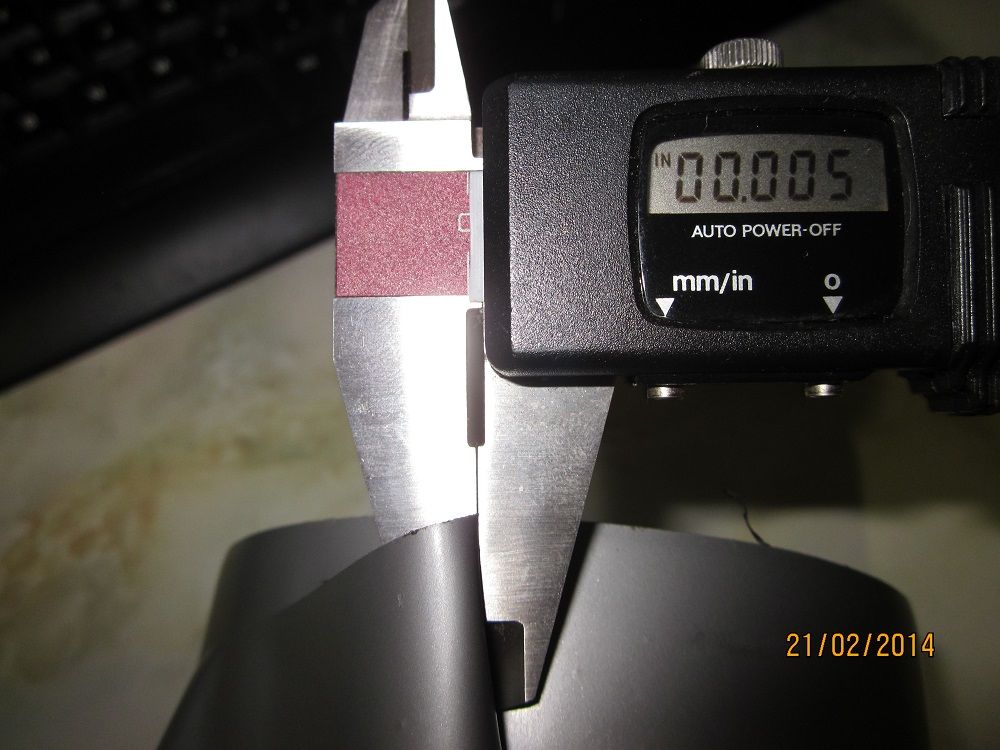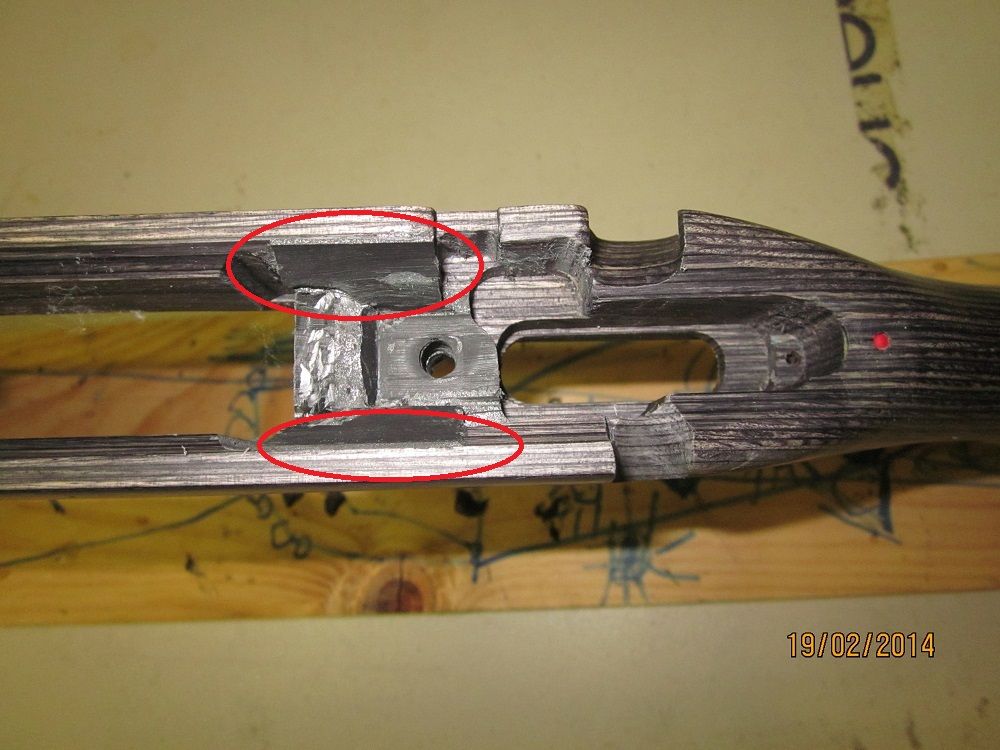There has been a question asked, why I did the bedding work with the recoil lug the way I have?
It is probably one of the things I gave the most thought and worry to. My first real concern was safety, being that the lug is not secured to the action or the stock. Would this let the action move to fare in the stock possibly even shearing of the action screws when fired!!!
Second thing I was thinking about was the point of bedding a rifle… is it just to put some hard stuff under the action to stop the stock and action crushing together…
Let me do a quote if I may…
From the book: Centrefire Rifle Accuracy, Creating and Maintaining It. By W HAMBLY-CLARK JNR..
Chapter Seven: STOCK BEDDING Paragraphs from Page 282 - 283
“You see, upward forend pressure on the barrel cancels out the consequences of bad action bedding. It probably does this by cramping the barrelled action in the stock so that it is stuck in one place from shot to shot. Essentially, the barrelled action does not move with recoil as it is jammed tightly in the rearward or recoiled position, and the compression behind the recoil lug does not have the power to move it forward. Whatever the reason, and that one seems to fit, it’s a fact and it works. You will see lumps of wood left in the forends of factory rifles, even today, that are designed to put upward pressure on the barrel in order to cancel out the bad effects of less than perfect bedding.
It didn’t take long to work out what the problem was, but the cure was very painful and time consuming. What was needed was to make the bedding platform straight. And flat so that the barrel action could be tightened, into the inletting without being stressed, bent or cramped. It sounds easy, but it’s not. It takes a great degree of skill, and a long time to create a perfect bedding platform in wood. This is a job that is simply beyond most people, even beyond most experienced craftsman, the tolerance required being so miniscule; to the order of tenths if a thousandth of an inch.
Fortunately, around the time all of this was happening, fiberglass materials began to appear on the market, and these offered a solution to those of us who had difficulty making a perfect bedding platform in wood.
So that is the reason we have to bed our rifles. It is simply to allow us to enjoy the benefits of a floating barrel, those benefits being to realize best accuracy along with a stable zero.
In order to be able to move freely with in the inletting of the stock the barrelled action needs clearance between itself and the inletting. This clearance should be in the following places
1. In front of the recoil lug
2. At both side of the recoil lug
3. At the bottom of the recoil lug.
4. At any flat side on the receiver.
5. Behind the rear tang.
6. At the sides of the rear tang.
7. At the front of the rear tang, if it is of a step design.
8. At the point between the front bridge and rear tang of the receiver that in not bedded.
So the above I thought about a lot, re read this chapter in his book many times to think about how to apply this to an Axis, with a removable recoil lug and a floating rear tang…
So working on duct tape giving .005” of clearance per layer approx. I decide that I wanted the lug to be bedded hard up against the rear side, but .010” clearance on the front and bottom. And .005” on the sides to allow the action to return hopefully to the same place after every firing.
Now the Axis with its removable lug probably already has those qualities between points 1 and 3, except instead of being between the stock and lug, it is between the lug and action.
I just didn’t feel there was enough! I may well be proved wrong, and I may have given it too much on the bottom with 2 pieces of duct tape. I am thinking though if I need to lift the lug a little I can simply put a piece of duct tape on the bottom. And the same goes with the front and sides, instead of gluing it in I can adjust it a little if need to.
I will do the rear tang while I am at this. I decided to bed the rear tang using points 5 threw to 7. But also bedded the rear action ring… to the side of the stock (red circle in photo), this is so if I have to remove material to allow the rear tang / trigger assembly to float a little with its spring setup. I still have a surface that will be flat and true to the front action ring area. As the rear action screw does not hold the trigger assembly tight to the action, it goes threw it only.
Hope this helps others think about what they are trying to achieve, there are other ways I am sure of doing this... This is just the way I thought about it and did it. I was asked could I of just put tape between the barrel and recoil lug, and glued the lug in place. haven't thought hard about that, but It does sound like it would achieve a similar thing.
Thanks
Patrolit









 Reply With Quote
Reply With Quote
Bookmarks